Hunger: Statewide Issue, Local Solutions

“My name is Richard Hood. I am 62 years old and live in Middle River. I am here at Victory Villa Baptist Church today because the money I get from working part-time and the $38 I get in food stamps each month just isn’t enough to survive on. Here, I can get a hot meal and a bag of groceries to take home, which really helps.”
“I am Ava Wentz and live in Anne Arundel County. I am a single parent who works seven days a week at different jobs while trying to watch my kid at the same time. Being able to get food from ACAN Pantry has been a godsend.”
Richard and Ava are two of the more than 650,000 Marylanders who don’t always know where their next meal will come from. The circumstances that led to their food insecurity are unique to their life experiences and helping them find pathways out of hunger will take different approaches.
We know that it’s going to take more than food to end hunger for more Marylanders like Richard and Ava. Thankfully, you do too, and your support gives us the flexibility to develop new strategies to combat some of the reasons that lead Marylanders to seek out food assistance in the first place. Issues like a lack of financial resources, medical or childcare concerns, or even something as basic as transportation.
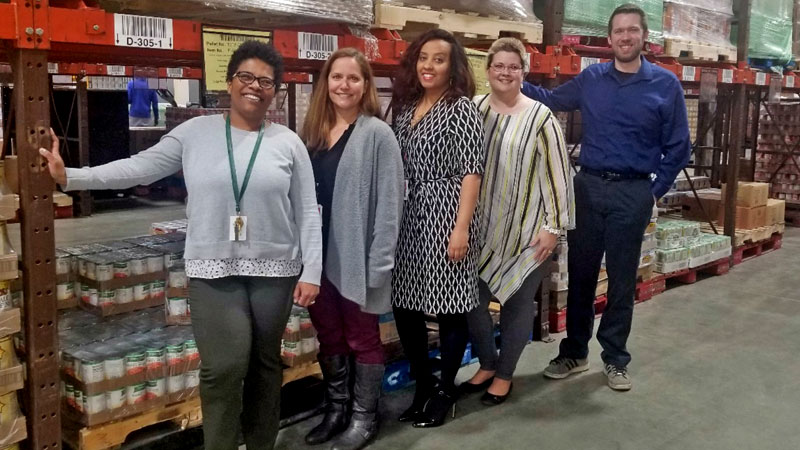
But the factors that lead to food insecurity in western Maryland are not always the same as they are in Baltimore city or on the Eastern Shore, so we’ve devised a regional approach to tailor programs that meet the needs of different communities more effectively.
We have restructured our Programs team to focus on five Maryland regions, each led by a Regional Program Director who is developing a suite of integrated solutions that take aim at hunger in a more deliberate manner in each community. From there, and with your support, we will change the future for more food-insecure Marylanders.
Western Maryland
More than 43,000 food-insecure individuals — nearly 18,000 of them children — live in Garrett, Alleghany, Washington, and Frederick counties. People like Wanda Barber.
“I’m Wanda Barber from Smithsburg, and yes, I can tell you the honest truth that without the people who give to the Maryland Food Bank, and help Tabitha’s Table, I don’t know if I would even be doing as good as I am.”
In spearheading our efforts in western Maryland, Frank Ducey takes inspiration from his mother, who worked in the non- profit space for more than a decade. He is dedicated to doing more for individuals like Wanda by strengthening local relationships and cultivating new partnerships that will help us identify and provide pathways out of hunger for our neighbors from Oakland to Frederick.
“Knowing that I am instilling hope in local communities by helping address the reasons people are visiting network partners in the first place fuels my passion for doing this work every day in western Maryland,” said Ducey.
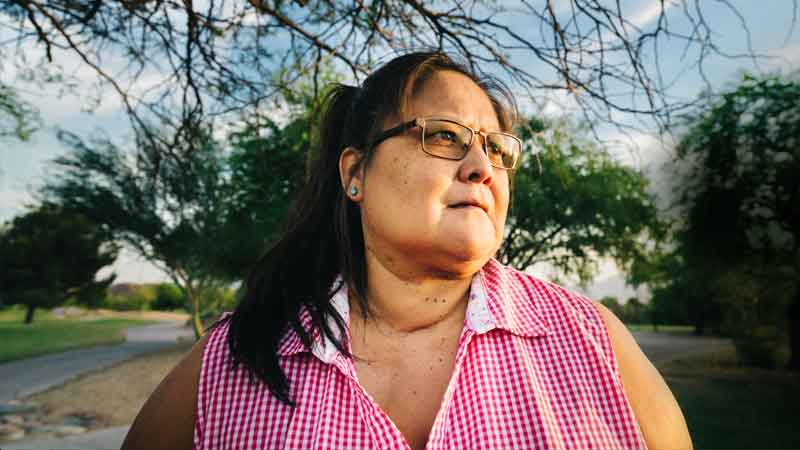
“If not for the wonderful people at Tabitha’s Table, I might be like one senior I know of – she was actually buying cat food to eat, and she lives right in Hagerstown.”
Wanda’s story is typical in this part of the state. She worked hard and was proud to be able to support herself. That was until she hurt her back and racked up a lot of medical bills leading to a downward spiral, including being homeless. While she is doing better now, she is unable to find work and still needs a helping hand.
“I’m not trying to take advantage of anything, I’m here because I’m on disability and I only get so much money. I had two jobs for years and years trying to make more money, but I ended up getting hurt and I had to get back surgery. On the job I had, I had to lift 30 pounds and after the surgery, I have screws in my back, and I can’t lift 30 pounds anymore – but I sure can help by volunteering.”
Wanda feels the value of her community, and we want to help our network partners make sure that every hungry person in western Maryland does too.
“In this day and age, we all have to look out for each other and at Tabitha’s Table, they make it so that I can be a part of something bigger. Because the Maryland Food Bank helps me, I try to give to the next person because you never know what brought them in.”
Last year alone, you helped Wanda
and other hungry Marylanders in the western region overcome barriers to food security by supporting the distribution of more than 7.1 million meals through our network partners, Pantry on the Go events, and MFB Kids programs.
Northern Maryland
In the region that borders Pennsylvania in the north, and Delaware to the east — Baltimore, Carroll, Cecil, and Harford counties — there are roughly 108,000 food-insecure people, including more than 43,000 children.
“I’m Vincent H., and live in the Dundalk area. A lot of people have old-school opinions on people who get food, that we’re all homeless, or lazy, or on drugs. I worked my whole life but didn’t have the retirement accounts like they do now, and sometimes I just need a little help. Even though I’m retired, my bills are just as high, and I only get Social Security. Getting a bag of groceries with milk and eggs, and sometimes meat, is real helpful.”
Emily Alt is leading the charge to do more in Dundalk, and the rest of the northern region, a unique mix of sparsely populated rural areas and Baltimore County, the most populous county we serve. Through meaningful and personalized interactions with key stakeholders, she seeks to identify and understand any gaps in service and provide network partners with the resources required to meet the actual need in their communities.
“Getting to know each community, and then using localized data to help partners address the specific needs in their neighborhoods is very fulfilling. I know our work is going to help more Marylanders find their pathways out of hunger,” said Alt.
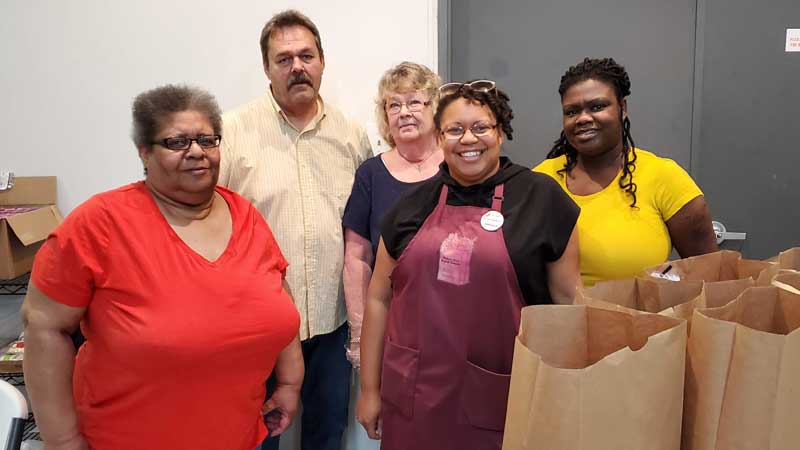
“Victory Villa helps if you just ask. When you need food of course, but sometimes they may help you with clothes, or a car ride, or even budget advice if you need it.”
One of the individuals in northern Maryland whose life will be impacted by our new regional approach is Tysha Fortson.
“I am a single mother of three, and until I had a heart attack in 2015, I was able to work and feed my family. I am so thankful that there are places like Victory Villa Baptist where receiving food really helps our food budget – and my teenagers eat a lot of food!”
Tysha relies on a scooter to get around, and finds it difficult to not only get to, but afford good food at her local grocery store.
“I don’t drive and have to pay a cab just to go to the store. That just makes it tougher to get the things I need for my growing children.”
In FY19, your donations provided more than 10 million meals
to children, seniors, and families like Tysha’s in the state’s northern region, allowing them to focus on other priorities.
Central Maryland
In Baltimore city alone, there are nearly 132,000 people (including more than 28,000 children) who don’t know where their next meal might come from — that’s nearly 20 percent of all food-insecure Marylanders. Erica Ramos is more than a Baltimore city statistic; she is both a food assistance recipient and a volunteer at City of Refuge, one of our partners in Brooklyn Park.
“I am on a fixed income now after being disabled after I survived cancer, and there are times when it is hard to stretch what you just don’t have. City of Refuge is very helpful at those times. I can get food here that helps me build the meals I need to make things work for my family,” said Ramos.

Baltimore city’s unique challenges require a dedicated person to help improve the lives of its residents, and Zanika Ghee brings a wealth of experience and tools to the fight against hunger here.
“I have spent most of my life in the Baltimore area, and I care deeply about what happens in my community. There is an abundance of resources in the city and experiencing first-hand how our collective impact grows as we work more collaboratively to improve the lives of people that call Baltimore city home warms my heart,” Ghee said.
“After getting hit by a car, I just try to be an independent person. I am blessed to be able to receive food, which lets me be that way.”
Erica has gained a unique perspective on hunger in central Maryland while serving her neighbors at City of Refuge.
“People have different reasons for coming through the door, but I know they need help. Some of them have worked and lost their jobs. Some of them can’t find employment. Some of them are taking care of their parents and they don’t have a means to make an income, so they’re doing what they have to do to get by. This place comes in handy for those people; I know it does for me,” she said.
Your belief in our mission
allowed us to bring more than 9.5 million meals into Baltimore city neighborhoods last year through school pantries, network partners, Pantry on the Go events, and HEART Markets.
Southern Maryland
Spread throughout Anne Arundel, Calvert, Charles, Howard, and St. Mary’s Counties, more than 91,000 individuals (including nearly 38,000 children) face hunger on any given day. Ava Wentz, who is raising her five-year-old son on her own, lives in Severna Park.
“I am trying to stay off welfare and be able to stay in a nicer area — one with a good school system for my son. Even if I can spend $10 less a week on food, that means I can do better things for my family.”
Southern Maryland reflects Maryland’s diversity, and Yekatit Bezooyehu is using different tactics to combat hunger and its root causes in different communities.
“In some areas, food deserts are the primary driver of hunger, while the combination of a high cost of living and low wages are barriers to food security in others. I am working closely with the network partners in my region to make sure we are doing the right things for their communities,” said Bezooyehu.
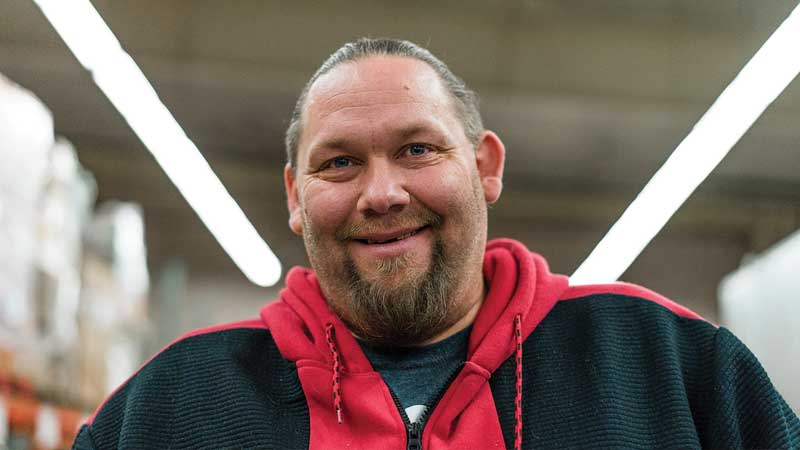
“Worried about when my next dollar was going to come, I walked in the door of the pantry and they put a smile on my face. To me, that was worth as much as the food that I was getting.”
Wentz is keenly aware of the precariousness of her situation.
“While being self-employed and working out of my home is great so I can be home for my child, that means things like insurance have to be worked into the equation.
“It’s like a balancing act to try and stay out of the welfare stuff — how do I minimize expenses so I can spend enough money on food for both of us? That’s where ACAN really helps us.”
Network partners, school pantries,
summer & supper clubs, and Pantry on the Go events brought nearly 8 million meals into the state’s southern region thanks to your generosity.
Eastern Shore
Across Caroline, Dorchester, Kent, Queen Anne’s, Somerset, Talbot, Wicomico, and Worcester counties nearly 42,000 individuals (including more than 13,000 kids) lack consistent access to enough food for an active, healthy life.
“I’m Denise Smiley. I am 62, and my 19-hour weekly contract means that I’m not eligible for many benefits. That makes it tough especially since I have my grandson, granddaughter, and two grandbabies living with me. I wonder if I lived in a different part of the state, if there might be more job opportunities, but this is where my family is, and we just have to all pitch in together.”
Jennifer Small will continue to help end hunger for more Marylanders in Eastern Shore communities, where many residents find transportation and limited employment opportunities to be significant barriers to food security.
“Seeing the network partners I have worked with for years be able to do more in their communities with new resources, fresh initiatives, and the power to address the reasons people come through their doors in the first place is truly humbling — what a time to work at MFB,” said Small.
“I thought I was going to be fine when I got older, but I wasn’t able to save much money. I am diabetic, and without the really good people here who are willing to help me, I don’t know what I’d do.”
Smiley faces many challenges on her road to food security but remains upbeat.
“There is some public transportation, but it doesn’t go where I need it to, so I have to take cabs. I am so blessed that Emmanuel Wesleyan brings me food twice a month. I wish they could do this for more people, because I know I am one of the lucky ones; there’s lots of people here who have it worse than I do.”
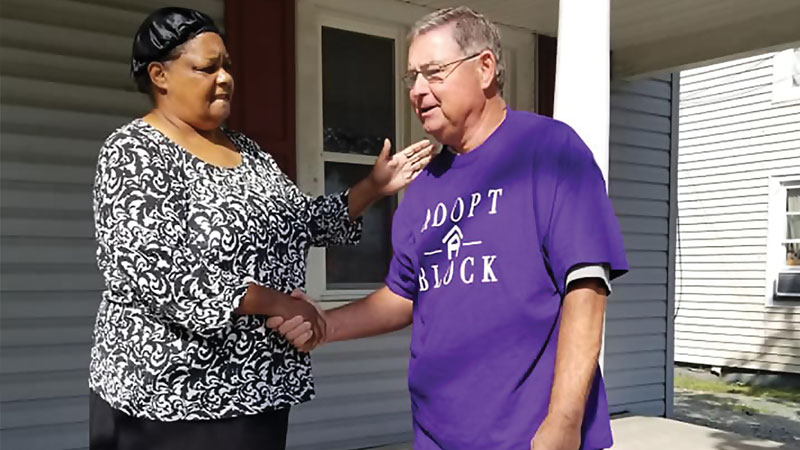
You helped hungry Eastern Shore residents
last year by supporting programs like summer clubs, Pantry on the Go, and school pantries, which distributed nearly 5.6 million meals throughout eight counties.
You helped hungry Eastern Shore residents last year by supporting programs like summer clubs, Pantry on the Go, and school pantries, which distributed nearly 5.6 million meals throughout eight counties.
Viewing hunger through a regional lens is allowing us to have a greater impact on hungry Marylanders in local communities, counties, regions, and ultimately the entire state. But as we’ve been saying, it takes more than food to end hunger.
We are immeasurably grateful that you have supported us throughout our first 40 years, and we are confident that with you at our side, we will be able to change the hunger narrative going forward. Together, we are feeding people, strengthening communities, and ending hunger for more Marylanders.
Get updates on our progress in the fight against hunger
Want to see how your involvement directly impacts the well-being of your neighbors in need? Get the latest news sent to your inbox.







